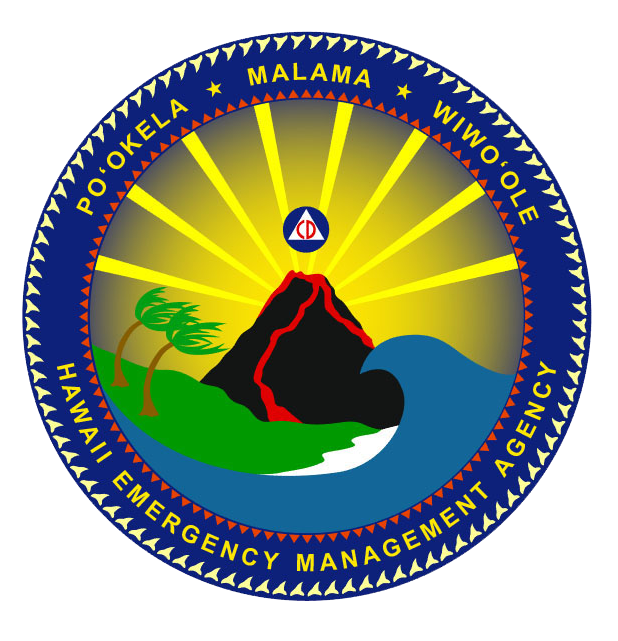Disaster supply kit should last for at least 14 days
Posted on Jun 27, 2017 in Featured, Information and News Releases, Main, Photo Gallery, Slider
With hurricane season underway, state emergency managers are urging residents to gather up 14 days’ worth of survival supplies rather than the previously recommended seven days.
They now figure that if the big one were to hit, most people would be forced to fend for themselves for up to two weeks while authorities worked to re-establish the islands’ infrastructure, including potentially crippled harbors, airports, roads and power grids.
The Hawaii Emergency Management Agency announced the new recommendation at a National Weather Service news conference last month when forecasters warned of a possibly busy hurricane season. Since then questions have arisen on how practical that recommendation is.
On Monday, Maria Lutz, regional disaster officer with the American Red Cross, conceded that she’s heard people complain that two weeks’ worth of emergency supplies is too expensive and too bulky.
The water recommendation — 1 gallon of water per person per day — can be a challenge in itself, especially for a large family with a pet or two.
“It’s huge and heavy,” Lutz said of the water. “But it’s nothing you want to skimp on in an emergency.”
Additionally, at least one doctor says tightened restrictions on prescription drugs could leave some patients short of the medicine they need to survive and cope during the prolonged period.
Dr. Kerrey Taylor, a Kailua physician who is president of the Hawaii Society of Pain Physicians, said patients who legitimately need stronger pain medicine already are having trouble filling their prescriptions in the midst of the opioid epidemic.
Add a hurricane into the mix of new rules and strict pharmacy refill policies, and some patients could end up suffering needlessly during the crisis, Taylor said.
While hurricane supply checklists vary on the mainland, most of them recommend gathering up enough food, water and other necessities to last three to 10 days.
In Hawaii the new extended emergency kit recommendation grew out of lessons from a port restoration analysis conducted by the Hawaii Emergency Management Agency’s Preparedness Branch, Administrator Vern Miyagi said.
Miyagi said a major storm like Katrina or Sandy could leave Honolulu Harbor in ruins, with cranes knocked down and channels blocked by debris, among other problems.
“When we looked at the damage assessment and how long it would take to put the harbor back into operation, it was clear seven days was not adequate enough,” Miyagi said.
Honolulu Harbor is the most active deep-water port in the islands, serving as a lifeline to the neighbor islands with barge shipments.
“Hawaii has no huge warehouses to stockpile supplies, so we have to get the port up and running as soon as possible,” he said.
Hawaii’s remote location in the middle of the Pacific is another factor. On the mainland, authorities have neighboring jurisdictions on which they can rely for relatively quick relief supplies and support, Miyagi said.
“We are on a very isolated island chain, some of the most isolated in the world,” said Chris Brenchley, director of NOAA’s Central Pacific Hurricane Center. “We must be prepared to be self-sufficient for many days to several weeks before help arrives.”
Miyagi, a retired Army major general with extensive disaster response experience, served as operations officer for the Hawaii National Guard joint task force on Kauai following Hurricane Iniki in 1992. He was on that island for six weeks helping the population recover from the most powerful storm to strike Hawaii in recorded history.
“You have to have a plan, and you have to get ahead of it,” Miyagi said. “Don’t wait to the last minute.”
Lutz said her advice for anyone who feels overwhelmed by the supply list is to focus on the important items: water, food and medications.
For those who know they have to find shelter elsewhere, bring your supplies with you, she said. Use your car to help store your supplies and cut down on how much you have to bring inside.
Miyagi said those who are preparing for a storm should also keep this in mind: Retailers go out of their way to stock their shelves with additional supplies, so people shouldn’t return their items to the store after a storm passes.
“That is not fair to the retailers,” he said, “because what you should be doing is collecting that stuff, putting it aside, and that’s your stuff for the rest of the season. You can use it and replenish it during the season so it’s recycled and refreshed as you go along.”
Regarding the water and its bulkiness, Miyagi recommends that people not purchase water, but instead get empty containers or bladders and have them ready to fill as a storm draws closer.
Hawaii officials begin tracking storms when they reach 140 degrees longitude — or roughly four or five days out. Hurricane season stretches from June to November, with most storms arriving in July, August and September.
As for pain medications, Taylor, the Kailua doctor, said she recommends talking to the prescribing physician for options regarding an emergency supply.
Abruptly stopping a pain medication can be extremely uncomfortable and even debilitating if a patient experiences withdrawal symptoms, she said, and that can be a huge problem, especially if the person suffering is responsible for caring for a family during a crisis.
“If you have difficulty at the pharmacy with an emergency medication fill, I recommend that you contact your insurance company customer service and explain the situation and get assistance,” she said.
